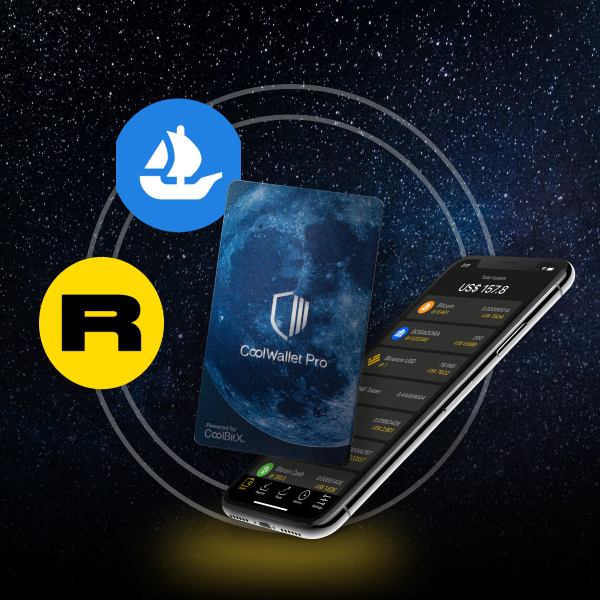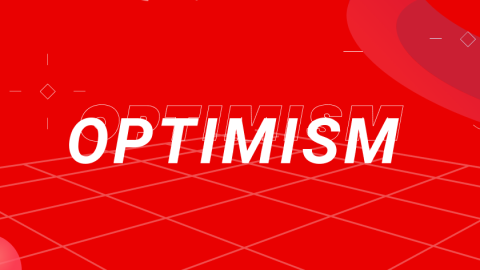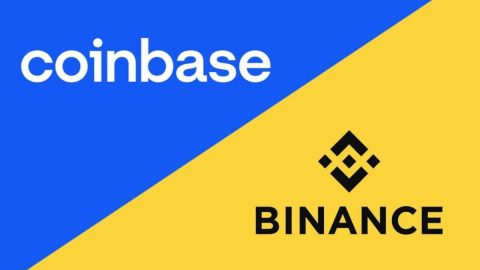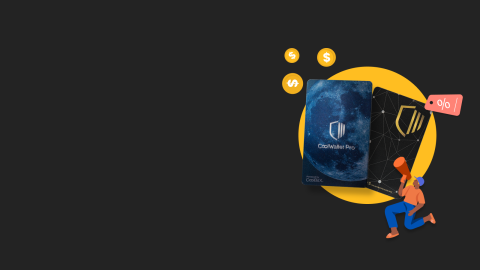The non-fungible token (NFT) space has been roiling with controversy in recent weeks over the sustainability and fairness of NFT royalties, a surcharge which is lately stirring fervent arguments between NFT creators and collectors about whether they’re justified. Will NFT royalties finally meet their maker or merely their maker’s wallet in coming years?
NFT technology rose in prominence in 2021, instilling new hope in artists whose income and intellectual property (IP) rights have been decimated by two decades of Web2 growth that saw huge profits for centralized tech giants, but only paltry returns for content creators. This is an issue that is still relevant in 2022, as the latest Spotify controversy on low pay for artists demonstrates.
NFTs, born under Web3‘s ethos of decentralization and fair remuneration free from bloated intermediaries, have until now offered their creators an additional slice of the sales pie, providing them the ability to earn long-term income not only from NFT mints and IP, but also from perpetual royalties from secondary sales.
However, a brutal crypto winter has taken its toll on markets and decimated floor prices. With less money to go around, a new generation of profit-first NFT marketplaces is seeking to do away with these royalties in order to attract more sales from collectors, and NFT artists are speaking out against it.
This is a complicated issue to choose a side on, as both creators and buyers present compelling arguments about why they should get more value from a purchased NFT they invested time, effort or money into. Let’s take a detailed look at NFT royalties and the supporting and opposing viewpoints surrounding them.
What are NFT royalties?
NFT royalties allow creators to automatically receive a small percentage of the payments on the secondary sales of their work. This is different from the traditional art world, where once a painter has sold a canvas, whatever value may accrue to that work later on as it continues to change hands does not directly benefit the artist.
In the case of NFTs, they are programmable through the smart contract to provide secondary sales revenue, which is typically between 5% and 10%. Many people had thought this was sacrosanct until the issue became a hot debate recently with the arrival of marketplaces that get around them.
Are NFT royalties technically enforceable?
It’s a common misconception that smart contracts encode enforceable royalty payments, but this is not the case. In reality, it’s up to the marketplaces to honor the royalty percentages specified by creators. Assuring NFT royalties stay in place can become a non-negotiable issue for NFT project founders who rely on that income in order to fund further promotion and community building, as influential artist Frank DeGods, founder of DeadGods/DeGods, the number 1 NFT project on Solana, explains in this Spotify podcast with Moonbirds founder Kevin Rose.
Which marketplaces honor NFT royalties?
At least up until now, most of the major marketplaces, including OpenSea, Rarible, LooksRare, SuperRare, Mintable, Foundation, Nifty Gateway, and Art Blocks have been willing to honor NFT royalties. OpenSea for example charged 2.5% commission and 2.5% royalty fees per transaction.
However, it’s always possible to make an agreement that bypasses one of these sites and sell an NFT without a royalty payment. One would simply gift the NFT and then receive crypto in return through outside wallet addresses. Also, markets are subject to demand to remain profitable, and with huge drops in NFT demand and prices (for example, OpenSea’s monthly trading volume is down 99% since May 2022), it is plausible that cutting or reducing NFT royalties could be open for discussion for some struggling NFT marketplaces, not only to stay profitable but also to ensure their customers don’t move over to a growing new batch of competitor sites that don’t offer royalties. It’s a Catch-22 situation for NFT marketplaces: do they serve the interests of their product providers, ie. NFT creators, or that of their customers?
Which marketplaces are NFT royalty-free?
Recently, a new breed of NFT marketplaces, such as SudoAMM, X2Y2, Yawww, and Solanart have been seeking to win market share by appealing to collectors rather than creators.
X2Y2, which has been recently leading the charts for trading volume among NFT marketplaces (despite its curiously small number of users), made them optional. The marketplace said on Twitter that collectors can now choose whether to pay royalties, citing changing market trends as the reason for its decision. Nevertheless, in spite of its move away from mandating royalties for creators, X2Y2 continues to charge its own marketplace fee of 0.5%.
Later, in an update to its policy, the company softened its position toward creators. It said that it would still be enforcing royalty payments for 1/1 NFTs, admitting that a world with zero NFT royalties would be less than ideal. It also said that it would let holders of specific collections vote on royalty standards for those sets.
Sudoswap throws out the NFT royalties playbook
Meanwhile, SudoAMM, an NFT marketplace created by Sudoswap, does not deal with royalties at all. This is in part because its automated market maker technology, involving liquidity pools that allow NFTs to be sold instantly rather than at auction, makes paying out royalties cumbersome. They offer a mere 0.5% commission fee as opposed to OpenSea’s 2.5% commission for themselves and 2.5% royalties for creators on each sale.
Other Solana NFT marketplaces, including Yawww and Solanart, have also pushed forward the anti-royalty trend with their business models.
NFT creators speak out in support of NFT royalties
The response from the creator community has been largely one of frustration with the idea that royalties are no longer a given. With the Web3 ethos of empowering creators at the core of why so many people have migrated into the space, many are reluctant to cede any ground in the argument.
Prominent NFT artist Claire Silver tweeted, “Royalties are a broader statement that we value creatives…We aren’t here to recreate old systems.”
Matt Medved, CEO of the publication NFT Now and also an artist, feels that royalty-free sales are a regression back to Web2.
Some creators pointed out that if royalties were to disappear, then one obvious consequence would be higher mint prices, which have been in decline for some time and serve as a barrier to mainstream adoption. The low cost of minting is one reason why Solana NFT platforms like Magic Eden have exploded in growth recently, while sales volume have dramatically declined on Ethereum-based ones, where users have to deal not only with high prices, but also exponentially more expensive gas fees.
Others said that if royalties were no longer available, only projects with VC funding would get off the ground.
Frank DeGods also makes a valid point, saying that royalties should not be considered an altruistic donation to creators, but in fact serve the interests of both NFT founders and holders at the moment, ensuring lower fees and fewer rug pulls when teams run out of funding.
Beeple plays devil’s advocate: “We can’t smart contract our way around this”
Not everyone shared these feelings of indignation at the evolving dynamics of the NFT market, however. The most high-profile NFT artist, Beeple, whose digital magnum opus “Everydays – The First 5000 Days” holds the record for the most expensive NFT ever sold at a crazy $69.3M, tweeted a sober assessment.
Beeple, who one could argue is NFT royalty himself by now, feels that there is no way to enforce royalties via technology as their ownership move across different decentralized marketplaces and wallets. Therefore, creators will have to build a collector base from the ground up that will see the value and want to honor these royalties. The artist went on to say that while he did in fact support royalties, he wanted to see the discussion grounded in technological reality. “We can’t ‘smart contract’ our way around this,” he explained.
Another popular NFT artist, XCOPY, urged people to calm down and evaluate their other options.
“We had 0% royalties before,” He tweeted. “I kept half the supply, worked out OK. Don’t panic.” The artist added that while he preferred the royalty system, people would do well to keep an open mind.
Punk6529: Royalties are a social convention- artists need a backup plan
Other voices came from the collector community, where many appeared to back the creators whose works they buy and trade. “You cannot make royalties enforceable onchain,” prominent collector and NFT influencer @punk6529 wrote. “People pay royalties because they believe in the social convention of buying and selling with the rules as set by the artist / creator.” Punk6529 this year rolled out his own innovative project titled “The Memes” which is playing around with the boundaries and perceptions of NFTs.
Conclusion
The issue around NFT royalties is a tough one and won’t be solved any time soon. Most likely, eventually, the market will decide. It’s also possible that certain premium projects continue to charge royalties while lesser projects don’t. Much of it has to do with demand. During a raging NFT bull market, royalties are not an issue, however, bear markets are a different story.
What is clear is that NFT creators should actively pursue the creation of additional revenue streams and development of a strong and loyal community who are emotionally invested in the success of the collection.
Some direction could come from the music NFT industry, where owners can actually share in the royalties generated by their digital collectible. Earlier this year well-known DJ and music producer Diplo allowed his NFT holders to actually share in the streaming royalties of his latest music. For NFT holders of pricy “right-click save JPEG” profile picture (PFP) art, it might be harder to generate additional income from intellectual property though if your project’s name isn’t Bored Ape Yacht Club.

Another opportunity is to combine the best of DeFi and NFTs to boost projects’ chances at longevity. Frank DeGods’ latest project, Y00ts, serves as an excellent case study for NFT creators looking to build growing hype and community around their projects and earn more income. Y00ts made headlines this week as its mint finally took place after weeks of sustained promotion by both the founders and a passionate community. DeGods holders can earn $DUST through staking, which can then be sold on the open market to other users and projects, or used to mint new NFTs such as Y00ts.
We are still in the infancy of NFT technology, and with crypto by large, any obstacles that come in its way will eventually most likely be dealt with an innovative way in order to ensure the whole asset class’ continued existence. Whether that will be done by cementing NFT royalties as a social convention only or baking it into the technology through smart contract coding, only time will tell.
One thing is certain, the long-term value of an NFT will remain largely subjective and based on its perceived beauty in the eye of its holder, with or without NFT royalties.
About CoolWallet- the top Web3 hardware wallet for safe NFT cold storage

Whether you support creator royalties or think they should be done away with to make life easier for traders, you’ll still want to keep your digital assets safe in the best NFT hardware wallet for your needs.
This is why CoolWallet, the Web3 hardware wallet designed for seamless everyday use, introduced in-app NFT trading on OpenSea and Rarible, with more marketplaces still in the works. Through our CoolWallet app, you can connect your wallet address and mint, buy, or sell NFTs.
For your everyday crypto and NFT cold storage needs, take a look at our CoolWallet Pro model, which would make a great gift for the NFT enthusiast in your life thanks to easy-to-use features and enhanced safety thanks to its EAL6+ secure element, military-grade encrypted Bluetooth communication, 2+1 FA biometric verifications, and tamperproof and waterproof credit-card design.
Written by Werner Vermaak and Tim Rinaldi
This article is not financial advice in any way and should not be construed as such. NFTs are a volatile asset class that can become illiquid during bear markets and investors are advised to do their own research before any purchases.




